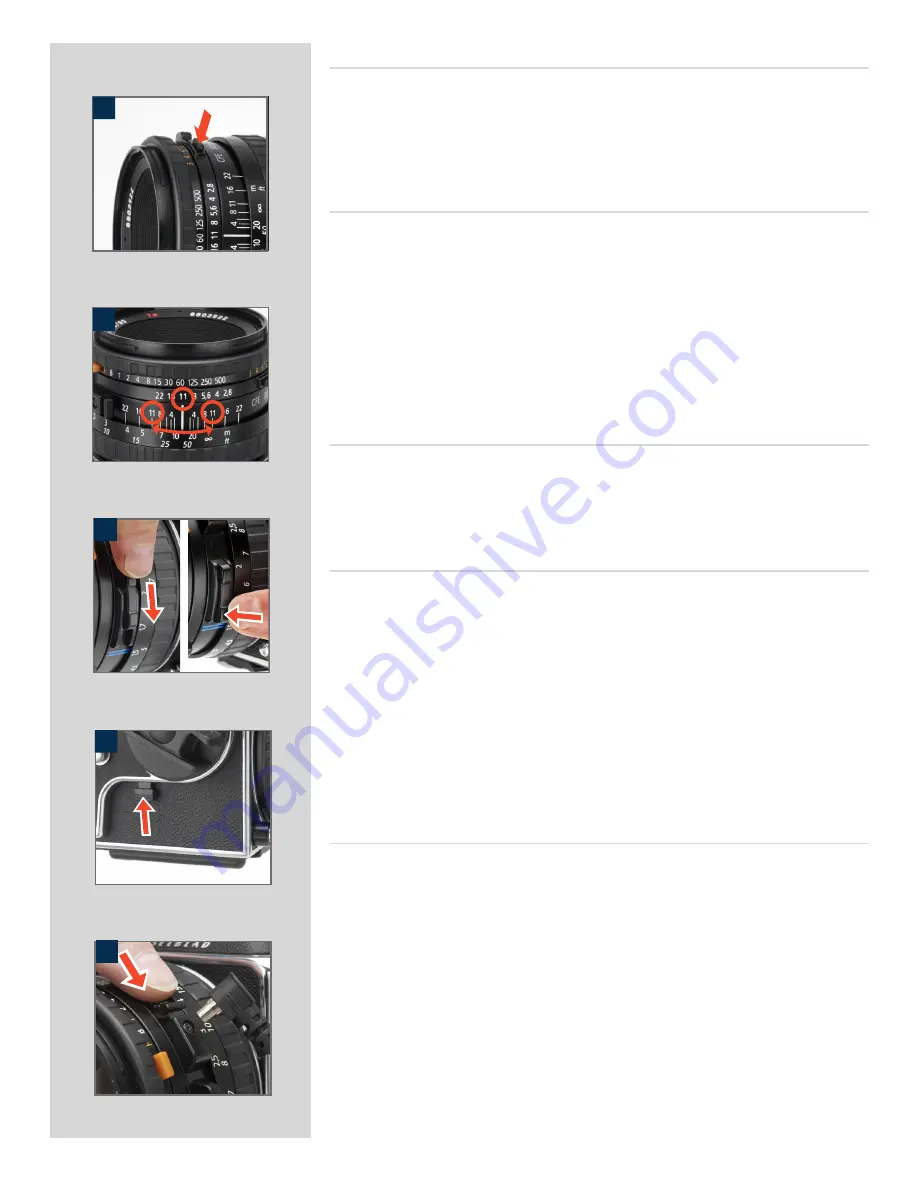
15
Interlocked shutter speed /aperture 7
If you want to change the shutter speed or aperture while still keeping the same shutter
speed/aperture combination (EV), you can interlock the speed and aperture setting rings
by holding down the interlock button which is on the right of the aperture scale. When
interlocked, the rings move together, increasing or decreasing the aperture to compensate
for a decrease or increase of speed respectively.
Focusing and depth of field 8
The focusing ring is closest to the camera body. It has a knurled rubber grip and engraved
distance scales in feet and metres. Focus the lens by rotating the focusing ring until you
obtain a sharp image of the subject in the viewfinder. The distance between the subject
and the film plane is read off the focusing ring’s distance scale opposite the central lens
index. Objects closer or further away than the selected distance will be sharp, within
certain limits. The limits of this field of sharp focus-depth of field-vary with the aper-
ture. The depth of field available at any given aperture can be read off the depth of field
scale on both sides of the central index. As an example, the illustration indicates how
to read the depth of field scale at an aperture of f/11. The depth of field will in this case
range from ca 6 metres to infinity.
Depth of field preview 9
Depth-of-field can be visually checked on the focusing screen. The diaphragm can be
stopped down to the preset aperture from its normally wide open position simply by push-
ing the depth-of-field preview lever downwards until it locks. To reopen the diaphragm,
depress the lower part of the lever.
Pre-release and cable release 10
Considerable efforts have been made to reduce camera vibrations caused by moving parts
in the exposure sequence. However, if you wish to avoid these vibrations completely, you
can pre-release the mechanism by pushing the pre-release button upwards. This causes
the following sequence:
1. The mirror folds up
2. The shutter closes and remains closed
3. The diaphragm closes to its preset aperture
4. The auxiliary shutter opens
When you subsequently press the release button, only the shutter then operates at the
preset speed. As shown in the illustration, you can also attach a cable release to further
reduce vibrations.
Flash synchronization 11
The C series lenses have built-in leaf shutters with speeds from Is to l/500s and B. Flash
synchronization occurs at full shutter opening via the PC flash terminal. Suitable elec-
tronic flash units can be used at all shutter speeds from Is -l/500s as well as B. Please see
under ‘Flash’ the sections on the use of a Hasselblad Flash adapter SCA 390.
9
11
8
10
7






























